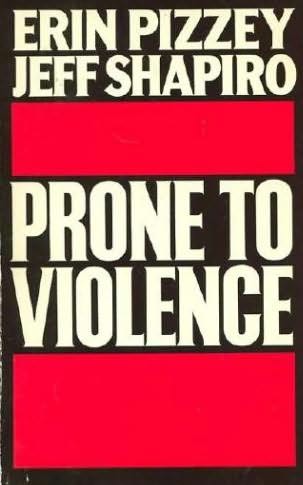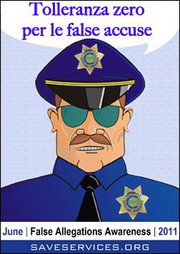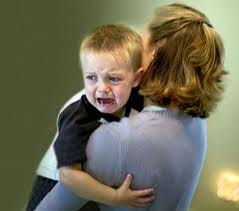«Il movimento femminista ovunque ha distorto il problema della violenza domestica per i propri fini politici e per riempirsi i portafogli. […] Osservai le femministe costruire le loro fortezze di odio contro gli uomini, dove insegnavano alle donne che tutti gli uomini erano stupratori e bastardi. Testimoniai il danno fatto ai bambini in tali rifugi».
«Sotto la copertura dei centri anti-violenza che danno loro fondi e strutture per portare avanti la guerra di genere contro gli uomini, le femministe hanno iniziato a diffondere dati tendenziosi».
Lo scrive Erin Pizzey, la donna che ha fondato il primo centro anti-violenza e che ha scritto il primo libro sulla violenza domestica. In questo articolo, estratto e tradotto dal Daily Mail (http://www.dailymail.co.uk/news/article-430702/How-feminists-tried-destroy-family.html), ci racconta come è andata.
 “Nel 1970 ero una giovane casalinga con un marito, due bambini, due cani ed un gatto. Vedevo poco mio marito che lavorava tanto, mi sentivo sola ed isolata e cercai qualcosa di diverso dal solito cucinare e pulire.
“Nel 1970 ero una giovane casalinga con un marito, due bambini, due cani ed un gatto. Vedevo poco mio marito che lavorava tanto, mi sentivo sola ed isolata e cercai qualcosa di diverso dal solito cucinare e pulire.
In quegli anni, sui giornali si iniziava a parlare del movimento femminista, che chiedeva eguaglianza e diritti. Fra i loro slogan, leggevo le parole “solidarietà” e “sostegno”. Credevo con tutto il cuore che le donne non dovessero essere isolate le une dalle altre, e che assieme potessimo migliorare la società.
In pochi giorni, contattai la sede locale, e stavo per unirmi al movimento femminista. Mi fecero pagare 3 sterline e 10 scellini, e mi dissero che dovevamo chiamarci “sorelle” e che i nostri incontri si sarebbero chiamati “collettivi”.
Il mio amore per questo movimento durò solo pochi mesi. Ai “collettivi”, sentivo donne che strillavano il loro odio contro la famiglia. Dicevano che non era un posto sicuro per crescere i bambini. Ero disgustata dalla loro virulenza e dalle loro violenza. Provai a parlare con le cape dell’organizzazione.
Mi buttarono fuori. Il mio crimine fu che avvisai alcune delle “sorelle” che avrei chiamato la polizia se avessero portato a termine il progetto di far esplodere una bomba in un negozio di vestiti. Fecero esplodere la bomba convinte che il negozio fosse un’impresa capitalistica che sessualizzava i corpi delle donne. Decisi che perdevo il mio tempo a cercare di convincere quello che, secondo me, era un movimento Marxista/femminista che voleva soldi da donne come me.
* * *
Un gruppo di donne la pensavano come me, uscimmo dal movimento femminista, ed organizzammo una piccola casa, che chiamammo Aiuto Donna. Presto tante donne vennero a chiederci aiuto. Potevamo incontrarci, portando i bambini. I miei giorni solitari erano finiti.
Accadde qualcosa che mi fece capire che potevamo fare qualcosa di più. Un giorno, una donna venne da noi, ed era ferita. Suo marito le aveva fatto del male con una seggiola, e mi guardava dicendomi “nessuno mi aiuta”. Per un momento, mi rividi quando avevo sei anni, avevo delle ferite e dicevo “mia mamma mi ha picchiato” alla maestra. Mi rispose “giusto così, sei una bambina turbolenta”. Nessuno mi aiutava, nessuno credeva che mia mamma, bella e ricca e sposata con un console, potesse essere violenta.
Scoprii che nessuno aiutava le donne ed i bambini picchiati in casa. Se accadeva per strada, era un crimine. Ma dentro casa era una questione familiare, e la polizia non poteva intervenire. Nessuno parlava di questo problema. Cercai di capire, ma non c’era niente da leggere, trovai solo alcuni casi di bambini picchiati su riviste di medicina.
Quindi, nel 1974, decisi di scrivere “Piangi Piano o i Vicini ti Sentiranno”, il primo libro al mondo sulla violenza domestica. Nel nostro rifugio arrivarono tante donne e bambini vittime di violenza, ne ospitammo fino a 56 in sole 4 stanze. Tutte raccontavano storie terribili, ma capii subito che non tutte le donne erano innocenti. Alcune erano violente come i loro uomini, e violente con i loro figli.
Le assistenti sociali mi dissero che perdevo tempo, perché quelle donne sarebbero finite per tornate dai loro partners. Ero determinata ad interrompere questa violenza. Quando i giornali iniziarono a parlare della nostra casa, la minaccia venne da una direzione inattesa.
Le femministe stavano perdendo il favore del pubblico, perché donne di buon senso avevano smontato la loro agenda anti-uomo e anti-famiglia. Avevano bisogno di una causa e di soldi.
* * *
Le donne del nostro rifugio organizzarono un incontro per aprire nuovi rifugi. Rimanemmo stupefatte quando a questo incontro arrivarono le lesbiche e le femministe radicali. Iniziarono a votare per loro stesse in questo nuovo movimento. Dopo un dibattito acceso, io e le donne abusate ce ne andammo. Quello che avevo più temuto accadde.
In pochi mesi, le femministe distorsero il tema della violenza domestica, non solo in Inghilterra, ma internazionalmente.
Presero i soldi che ricevevamo dallo Stato, ed ebbero una scusa legittima per odiare tutti gli uomini. Inventarono slogan fasulli “tutte le donne sono vittime innocenti della violenza maschile”. Aprirono tanti rifugi, ed impedirono agli uomini di lavorarci, cacciandoli anche dagli organi di controllo governativi.
Il nostro piccolo gruppo fece il possibile, nel 1972 avevamo assunto un uomo buono e gentile (nella foto), perché pensavamo che i bambini avessero bisogno di una figura maschile. Avevamo sviluppato un trattamento per aiutare le donne violente a riconoscere il loro problema.
Invece i rifugi femministi seguivano l’ideologia che solo gli uomini erano violenti. Lentamente, fecero il lavaggio del cervello alla polizia, nascondendo gli studi che mostravano che anche gli uomini erano vittime. Nonostante gli attacchi di giornaliste femministe e minacce anonime, continuai a dire che la violenza è un comportamento che tutti, uomini e donne, possono assorbire da piccoli.
 Quando pubblicai il libro “Inclini alla Violenza” sul mio lavoro con le donne inclini alla violenza ed i loro bambini, entrai nel mirino di centinaia di femministe, che manifestavano urlando “Tutti gli uomini sono bastardi”, “Tutti gli uomini sono stupratori”. Per via delle loro minacce violente, la polizia dovette scortarmi.
Quando pubblicai il libro “Inclini alla Violenza” sul mio lavoro con le donne inclini alla violenza ed i loro bambini, entrai nel mirino di centinaia di femministe, che manifestavano urlando “Tutti gli uomini sono bastardi”, “Tutti gli uomini sono stupratori”. Per via delle loro minacce violente, la polizia dovette scortarmi.
La situazione sociale peggiorava. Alcune femministe scrissero che “la presenza dei padri nelle famiglie non è necessariamente fonte di coesione ed armonia”. Insinuarono che gli uomini andavano allontanati dai bambini. Provai a mostrare i dati alla ministra delle Pari Opportunità, ma insistette che gli uomini picchiati erano un fenomeno marginale e continuò a chiamare gli uomini “aggressori”. Per circa 40 anni, questa ideologia malvagia ha permeato la nostra società, tanto che oggi gli insegnanti hanno paura di toccare i bambini. Gli uomini possono essere accusati di violenza ed abusi sessuali senza prove. I giudici discriminano i padri e li allontanano dai figli sulla base della sola parola di una madre viziosa.
Naturalmente, ci sono anche uomini cattivi. Ma attaccando tutti gli uomini abbiamo allontanato quelli che vorrebbero lavorare con le donne per il bene comune.
Credo che l’ideologia femminista abbia seguito una Utopia che doveva passare attraverso la distruzione della famiglia. Secondo il loro credo, la famiglia deve comprendere solo donne e bambini. Si possono buttare via i padri. E per ottenere questo, hanno imbrogliato sulla violenza domestica.
Che, per mia esperienza, non ha genere. Gli adulti violenti sono quelle che da piccoli hanno subito violenza, bambine o bambini.
Guardo indietro con tristezza alla mia visione, di rifugi dove le persone, uomini donne e bambini, possano trovare aiuto se hanno subito violenza. E se sono violenti loro stessi, li si possa aiutare ad avere una seconda opportunità di vivere in pace. Questa visione è stata distorta da donne vendicative, che hanno trasformato i rifugi in ghetti femministi, e li hanno usati per perseguitare gli uomini.
È venuto il momento di chiudere con questa ideologia dell’odio, e permettere agli uomini di collaborare a veri rifugi. Abbiamo bisogno di un movimento di tutti, che offra aiuto a chiunque ne abbia bisogno. Per quanto mi riguarda, continuerò sempre a lavorare con chiunque voglia il mio aiuto o possa aiutare gli altri. Inclusi gli uomini.”
 In occasione del Mese della Consapevolezza sulle False Accuse, il 2 giugno 2011 Natasha Spivack ha presentato a Washington il primo studio nazionale sulle false accuse, effettuato telefonicamente su di un campione di 10,000 americani. Questi i risultati:
In occasione del Mese della Consapevolezza sulle False Accuse, il 2 giugno 2011 Natasha Spivack ha presentato a Washington il primo studio nazionale sulle false accuse, effettuato telefonicamente su di un campione di 10,000 americani. Questi i risultati:



















